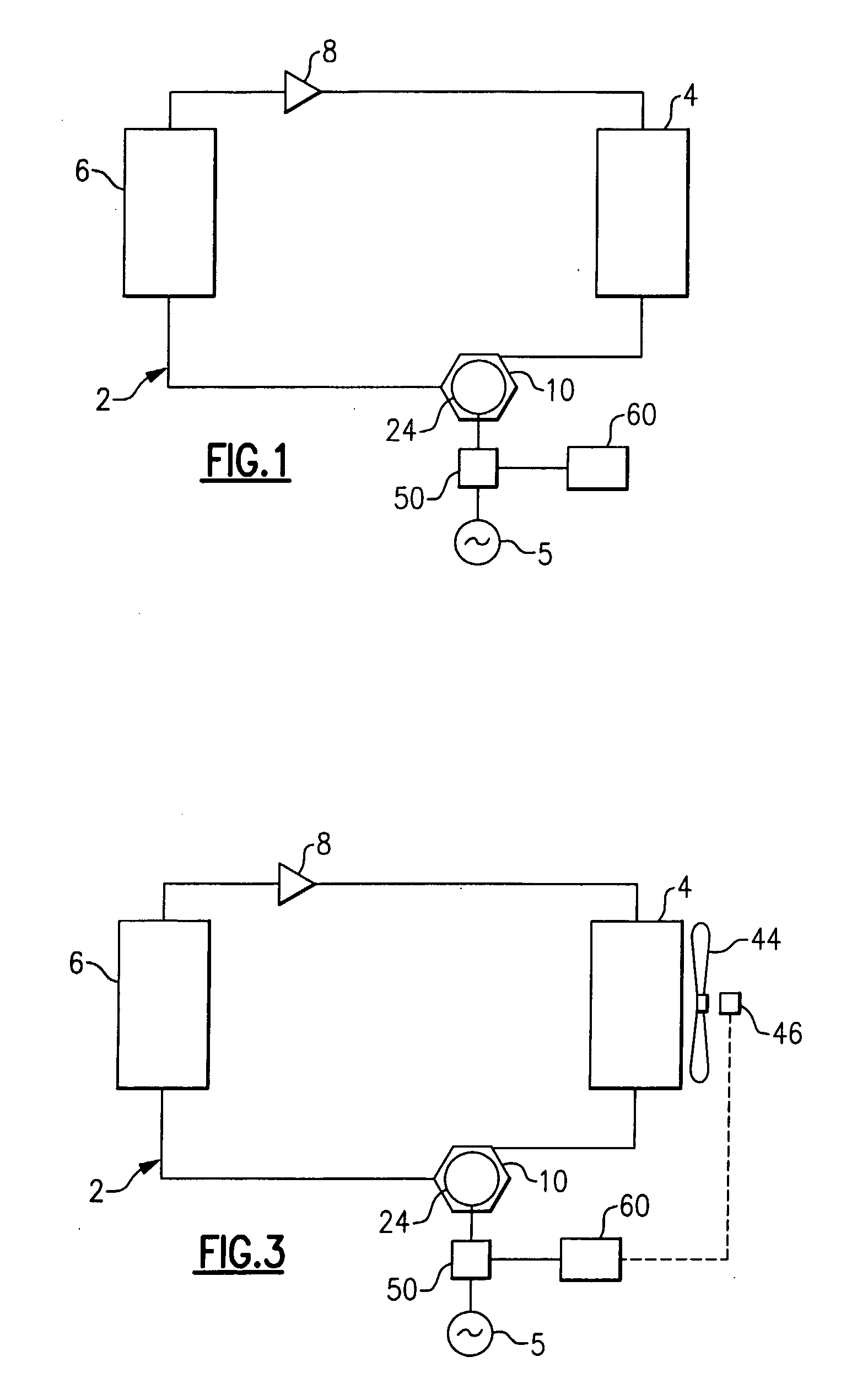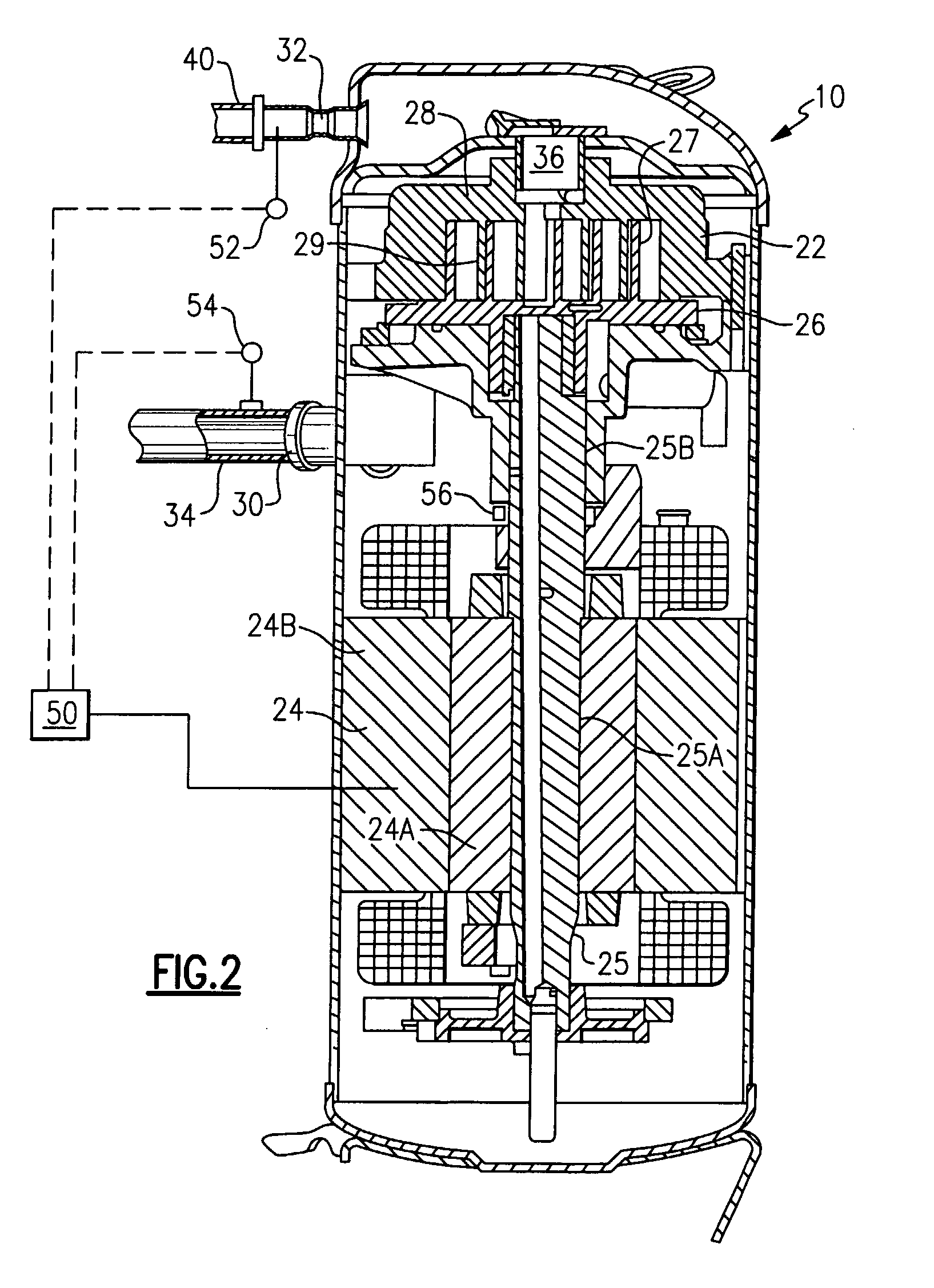Induction Motor Control
a technology of induction motors and control devices, applied in the direction of pump control, control systems, positive displacement liquid engines, etc., can solve the problems of accelerated wear and seizure of moving compression elements, the method of estimating motor strength is not only expensiv
- Summary
- Abstract
- Description
- Claims
- Application Information
AI Technical Summary
Benefits of technology
Problems solved by technology
Method used
Image
Examples
Embodiment Construction
[0021]Referring now to FIG. 1, the present invention will be described herein with respect to a compressor installed in a vapor compression system, such as, for example, an air conditioning or refrigeration circuit. However, it should be understood that the refrigerant circuit is used for illustration of the proposed concept, and that this invention can be applied to any installation where an induction motor drives any other component under load, for example a pump, an appliance or other device. For a refrigerant circuit, such as commonly found in air conditioning or refrigeration systems, having a condenser 4, an evaporator 6, an expansion device 8, and a compressor 10 connected in the conventional manner in refrigerant flow communication by refrigerant lines so as to form the refrigerant circuit 2. The present invention will also be described herein with respect to a scroll compressor. It is to understood, however, that the present invention may be applied to screw compressors, ro...
PUM
 Login to View More
Login to View More Abstract
Description
Claims
Application Information
 Login to View More
Login to View More - R&D
- Intellectual Property
- Life Sciences
- Materials
- Tech Scout
- Unparalleled Data Quality
- Higher Quality Content
- 60% Fewer Hallucinations
Browse by: Latest US Patents, China's latest patents, Technical Efficacy Thesaurus, Application Domain, Technology Topic, Popular Technical Reports.
© 2025 PatSnap. All rights reserved.Legal|Privacy policy|Modern Slavery Act Transparency Statement|Sitemap|About US| Contact US: help@patsnap.com



